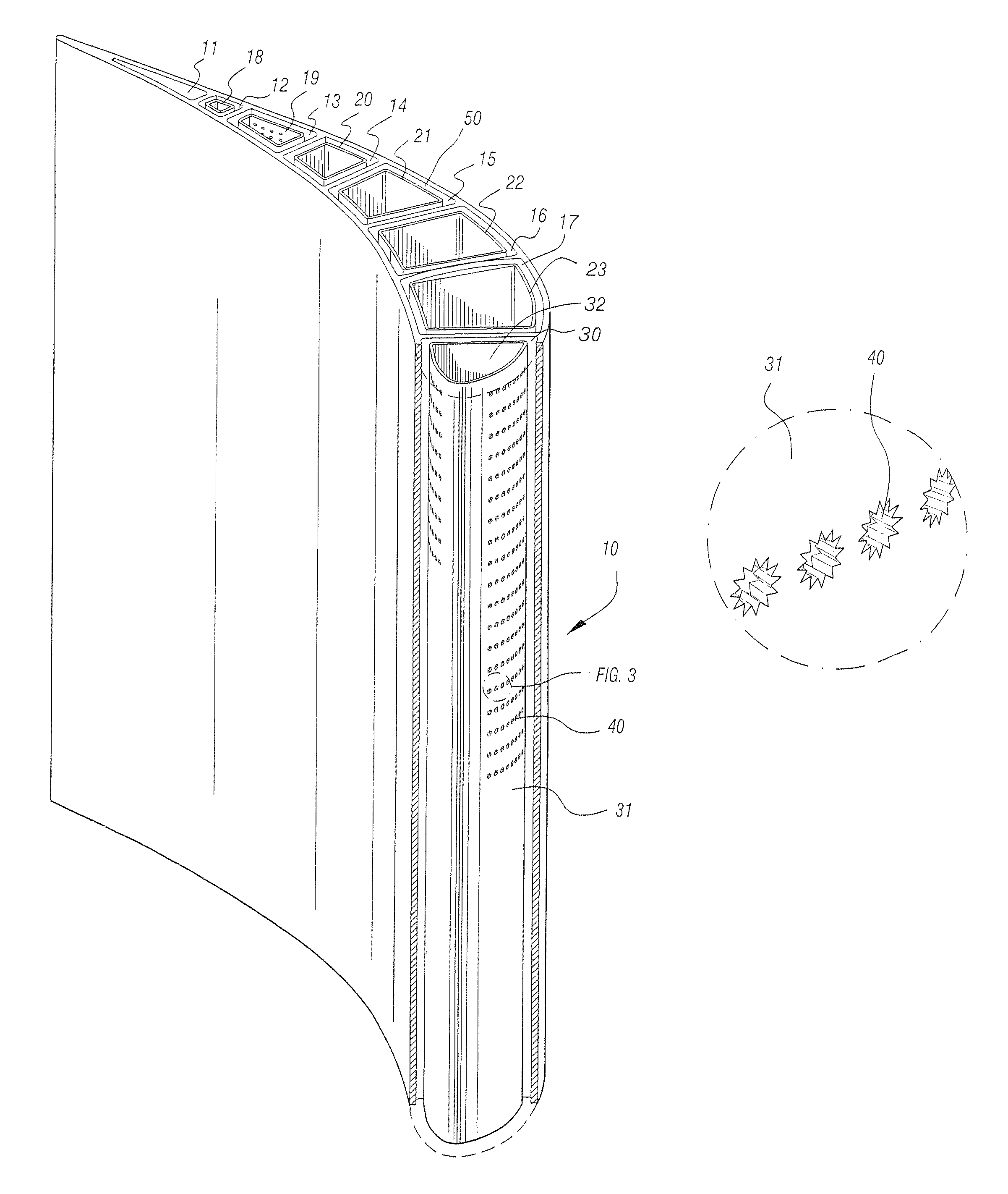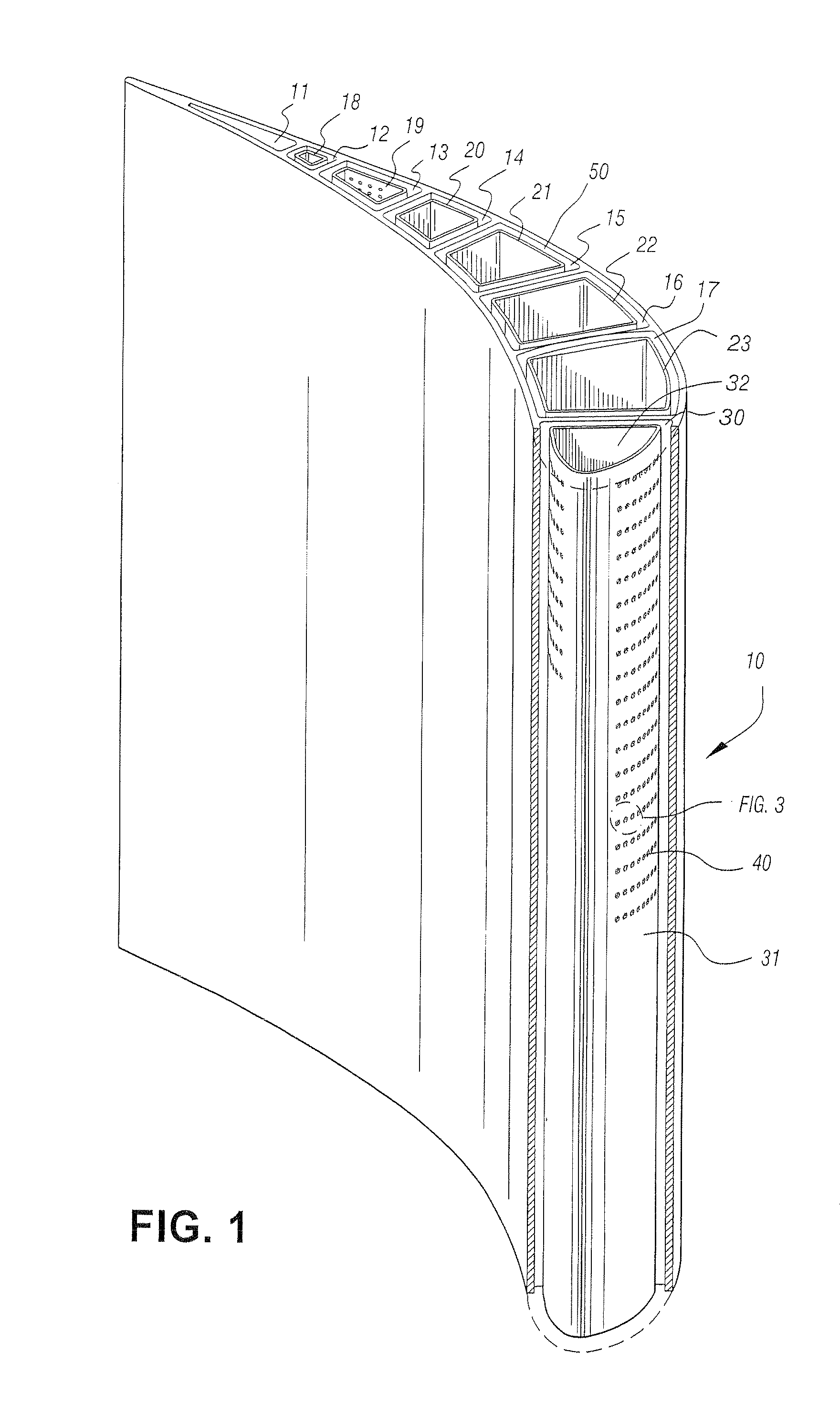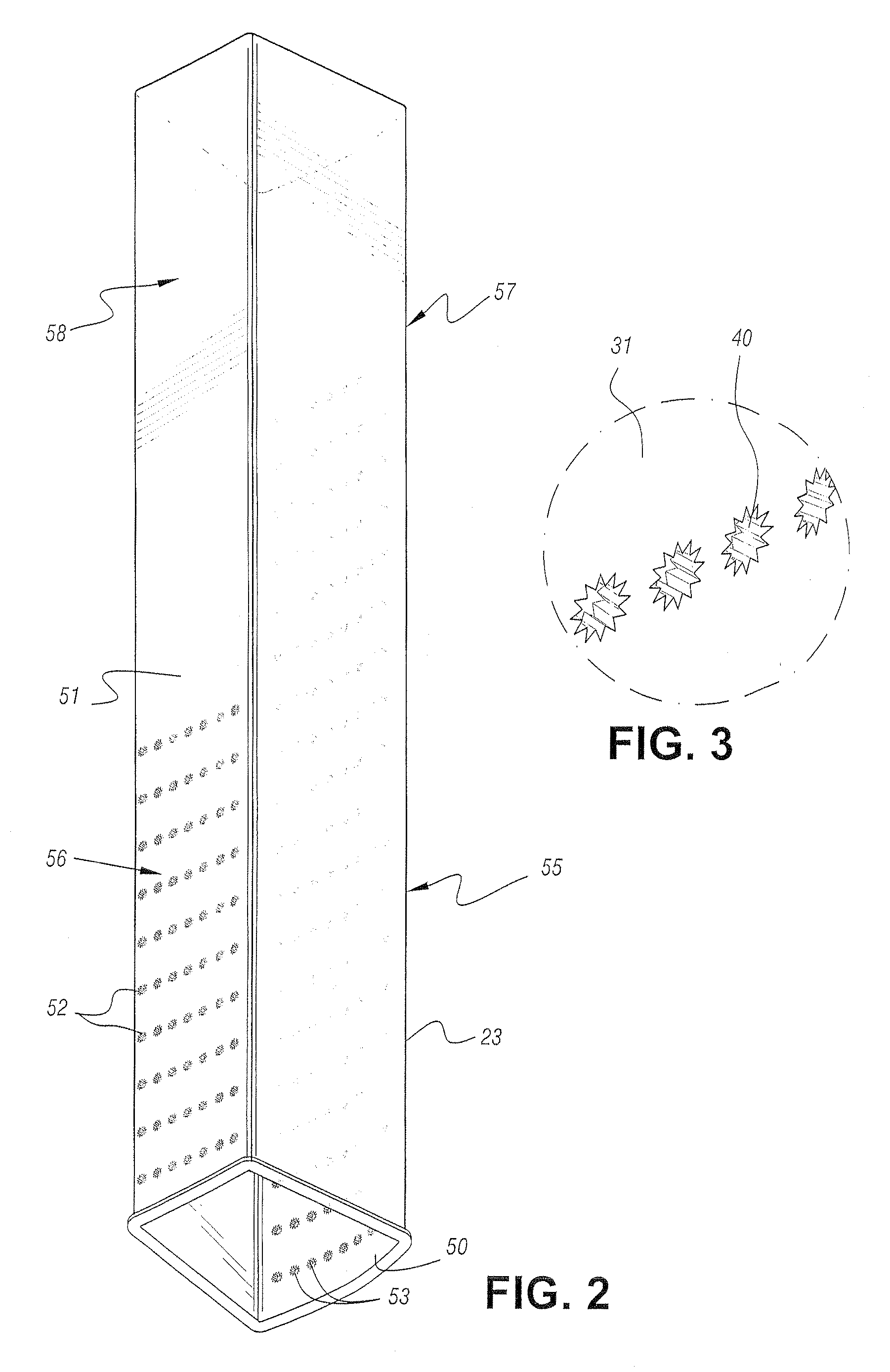Use of multi-faceted impingement openings for increasing heat transfer characteristics on gas turbine components
a technology of gas turbine components and impingement openings, which is applied in the direction of machines/engines, stators, liquid fuel engines, etc., can solve the problems of reducing fluid velocity, reducing fluid velocity, and reducing fluid flow, so as to reduce cross flow effects, increase heat transfer, and increase cooling fluid velocity
- Summary
- Abstract
- Description
- Claims
- Application Information
AI Technical Summary
Benefits of technology
Problems solved by technology
Method used
Image
Examples
Embodiment Construction
[0021]As noted above, the impingement openings according to the invention improve heat transfer and increase the effective use of cooling air and / or steam to reduce nozzle and other engine component temperatures. The multiple geometric edges that define an opening have a size and configuration that result in a higher impingement jet velocity and increased heat transfer as compared to round openings with a comparable cross sectional area. The use of such multi-faceted impingement holes allows for greater throughput and a net reduction in metal temperatures. It has also been found that the star-like configuration has the capability to develop a vortex flow field that provides for a more efficient mixing of the cooling air before it impacts the vane. The more efficient mixing allows for a higher velocity distribution of the cooling air, and hence higher heat transfer between the fluid and the surface.
[0022]The general form of an exemplary insert sleeve is illustrated in FIGS. 1-3. FIG....
PUM
 Login to View More
Login to View More Abstract
Description
Claims
Application Information
 Login to View More
Login to View More - R&D
- Intellectual Property
- Life Sciences
- Materials
- Tech Scout
- Unparalleled Data Quality
- Higher Quality Content
- 60% Fewer Hallucinations
Browse by: Latest US Patents, China's latest patents, Technical Efficacy Thesaurus, Application Domain, Technology Topic, Popular Technical Reports.
© 2025 PatSnap. All rights reserved.Legal|Privacy policy|Modern Slavery Act Transparency Statement|Sitemap|About US| Contact US: help@patsnap.com



